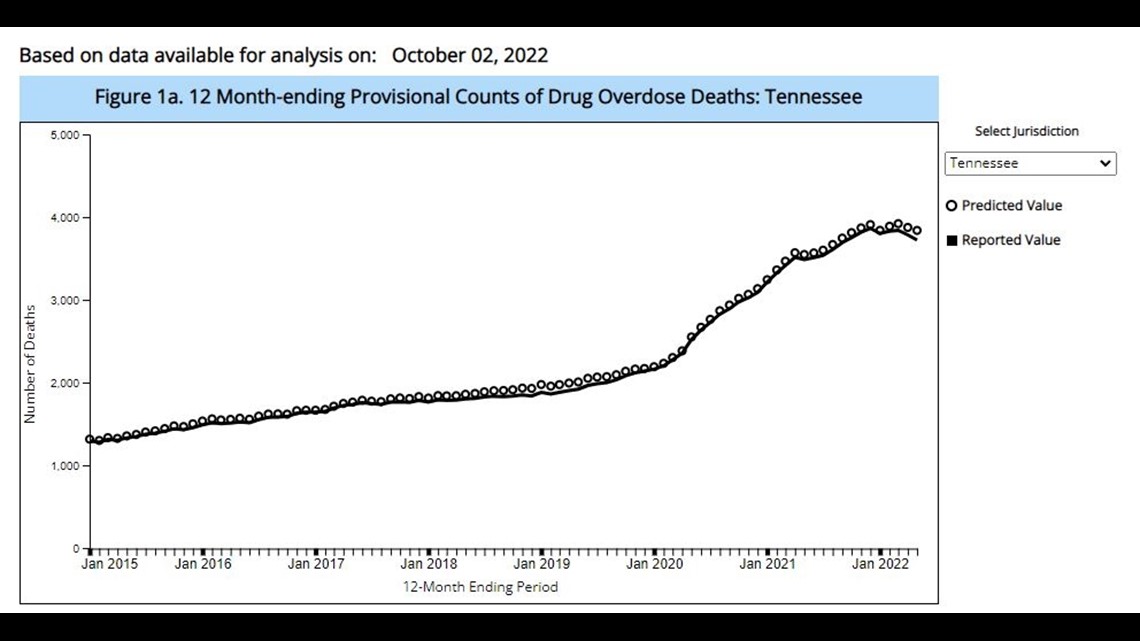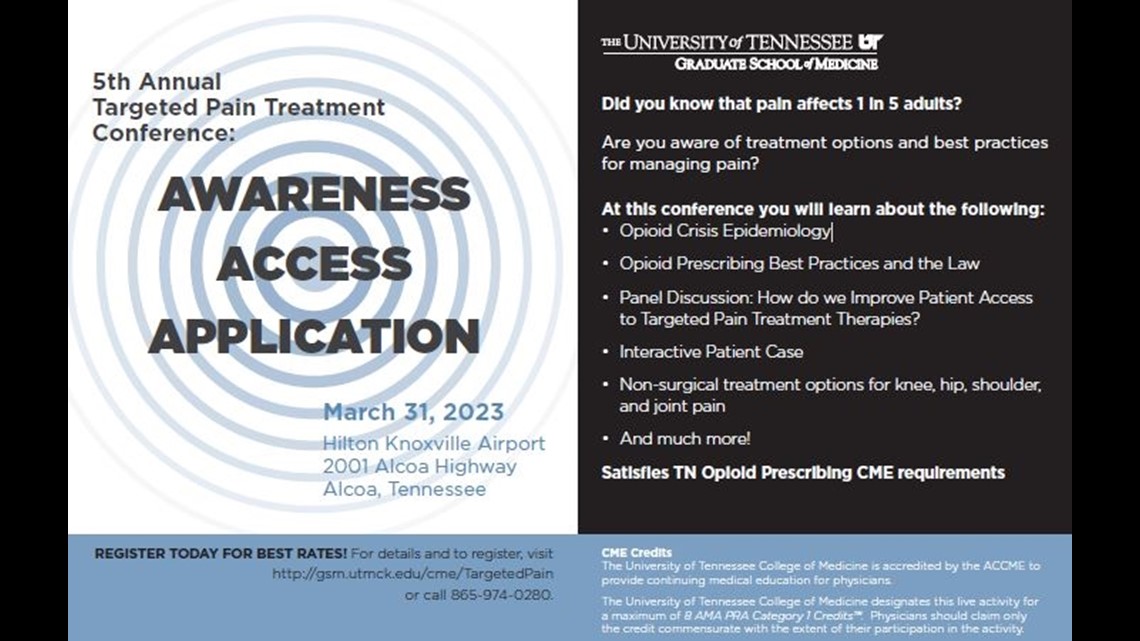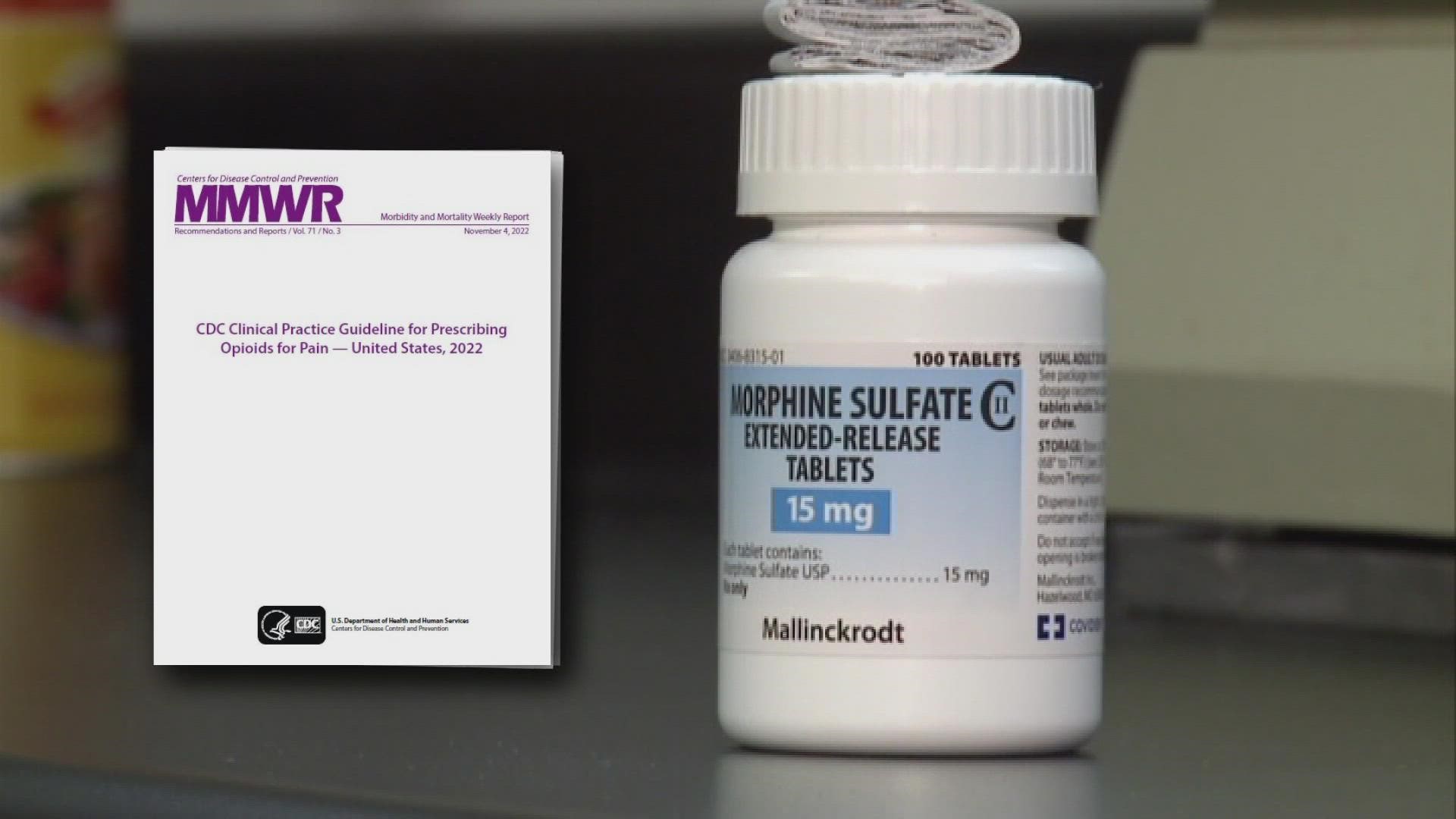KNOXVILLE, Tenn. — Just 11 days into November, Knox County has already lost 14 people to suspected drug overdoses. That brings this year's total to 420 deaths. It is quickly approaching last year's grim record of 498 deaths.
The Centers for Disease Control and Prevention is hoping its new guidelines for prescribing opioids will help cut down on those statistics.
In the past few years, it's been challenging for some patients with chronic pain to receive opioids, due to tight regulations. Now, the new guidelines will leave more of the decision-making up to the physician.
In the 1990s, opioids hit the market. Drugs like oxycontin, codeine and hydrocodone were marketed as a solution for pain.
"Back in the early 1990s, there was a very loose approach to prescribing opioids," Dr. Stephanie Vanterpool said.
Vanterpool is the director of Comprehensive Pain Services at The University of Tennessee Medical Center. She watched the pendulum swing.
"There was some mismarketing of opioids, and we didn't know then what we know now," Vanterpool said.
Karen Pershing, the executive director of the Metro Drug Coalition, remembers those times in the 1990s.
"During that time, everybody was prescribing them for everything. Teenagers were getting them for getting their wisdom teeth out," Pershing said.
Then, people started to learn the dangerous effects of this medication.
"As you saw an increase in prescribing and an increase in sales of prescription narcotics, then you started seeing the increase in overdose deaths," Pershing said.
The peak of opioid prescriptions was around 2012; however, the county is still feeling the ripple effects of that. The CDC released an opioid overdose death graph by state.
Tennessee shows a steady increase in overdose deaths. Then, the state reported a stark increase during the pandemic. Pershing said that may be due to isolation during that time.


"Then, we progressed towards the 2016 CDC opioid guidelines, where the pendulum actually swung honestly a bit too far in the other direction," Vanterpool said.
The 2016 CDC restrictions limited doctors' abilities to prescribe opioids, even to some long-time users, and people still dealing with chronic pain. Pershing said this was also a problem for folks who were already addicted to the substance. They could no longer get it from their physician. Some were cut off. That's when street drugs like heroin, and fentanyl took off again.
"Patients were either suffering, going through withdrawal, or felt as though they had to find other ways to treat their pain," Vanterpool said.
Now, doctors say the prescription pendulum has found a middle ground. The new procedures for prescription reinstate the power of the physician to determine the next steps in their patients' treatment.
Now, instead of opioids being used as a solution for pain, they are viewed as more of a bandaid.
"We use them temporarily, as we try to treat the source of their pain," Vanterpool said.
She wants people who currently use opioid prescriptions to remain aware of the dangers of the drug. You can find more information about opioid resources for patients here.
Physicians will be able to attend an upcoming pain treatment conference to learn about different treatment methods for acute and chronic pain.
"I think it's we've definitely seen a lot of improvement in prescribing overall. I think there's been a lot of efforts to educate health care providers about the management of chronic pain," Pershing said.



